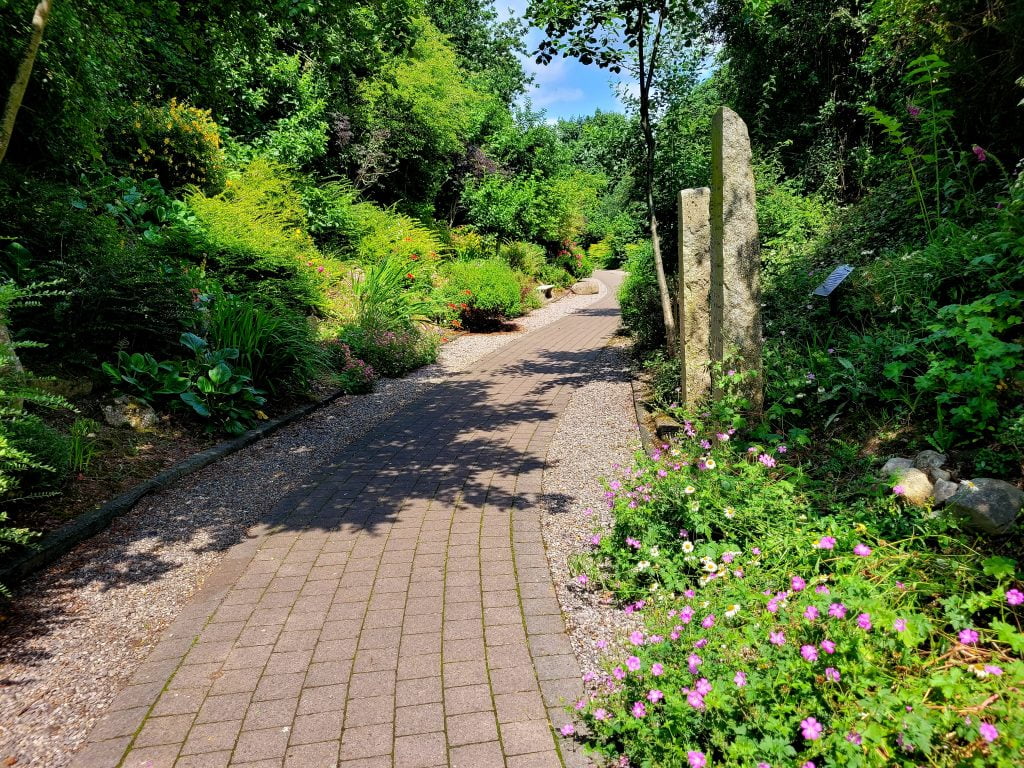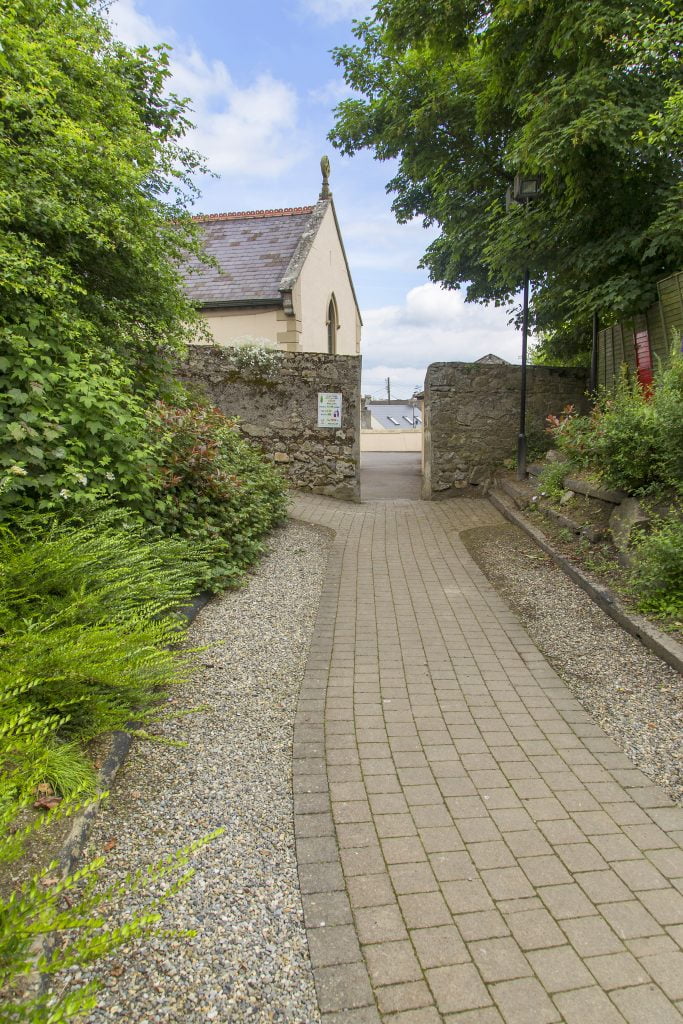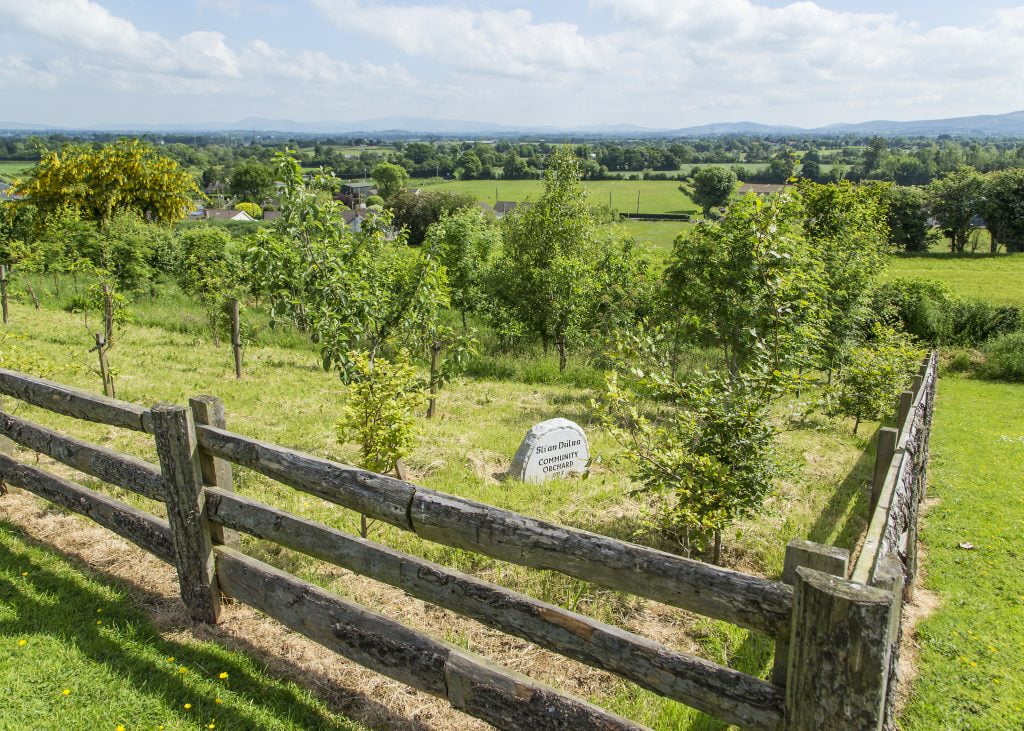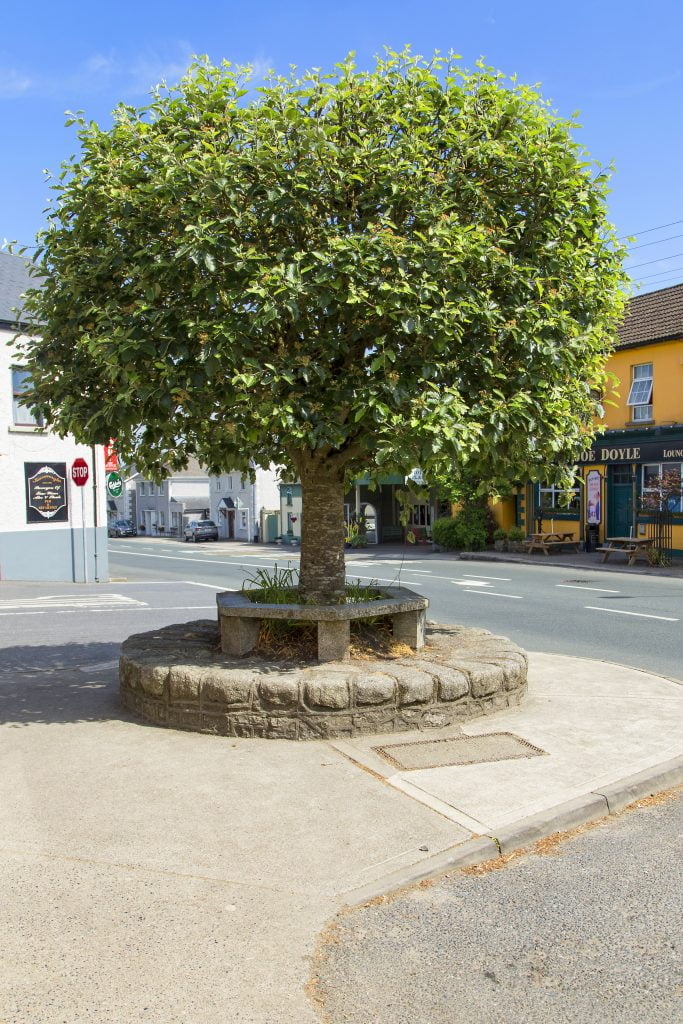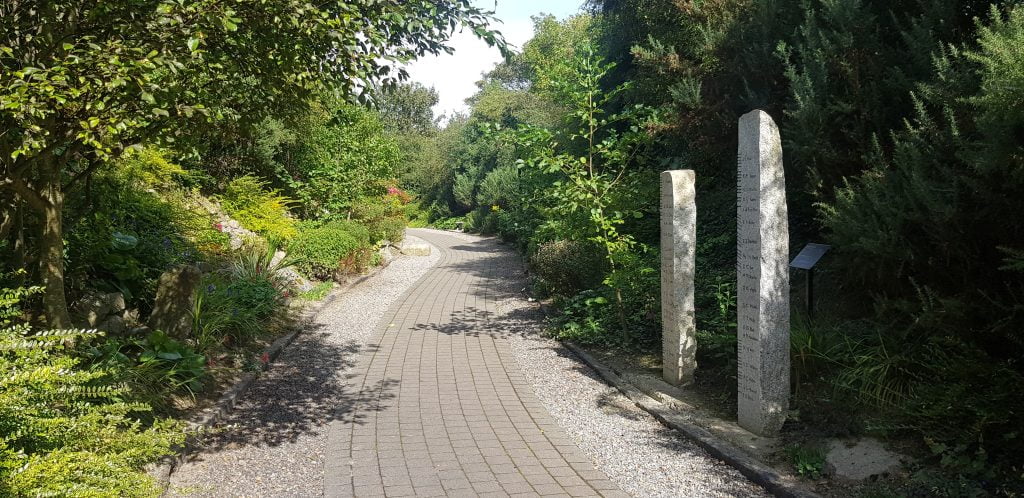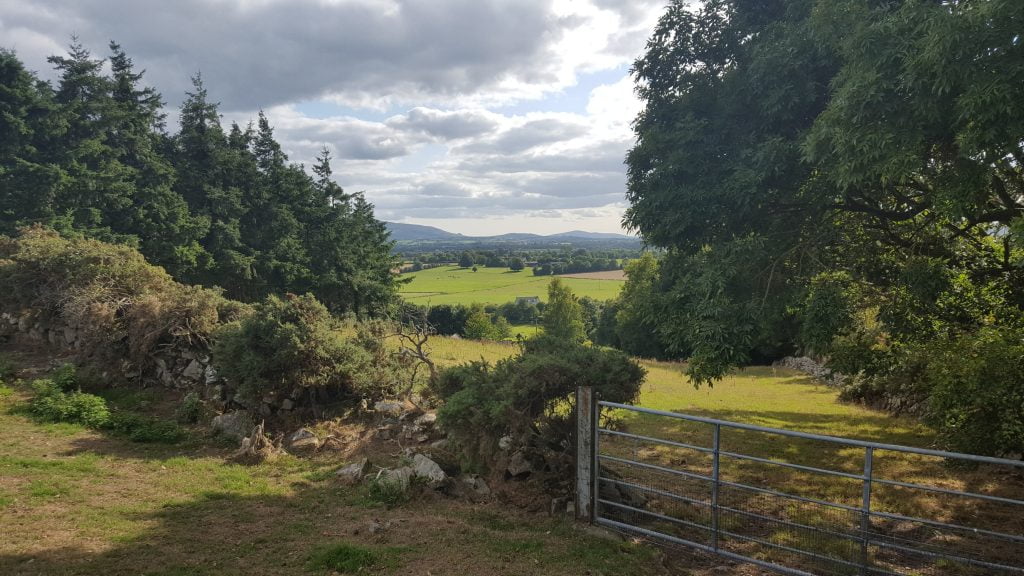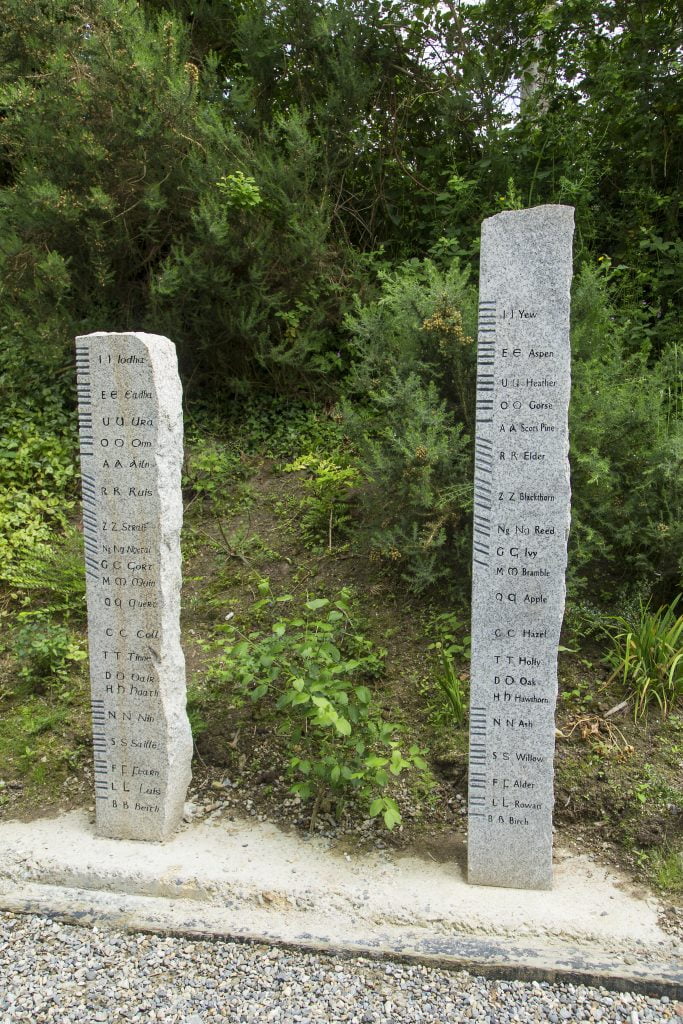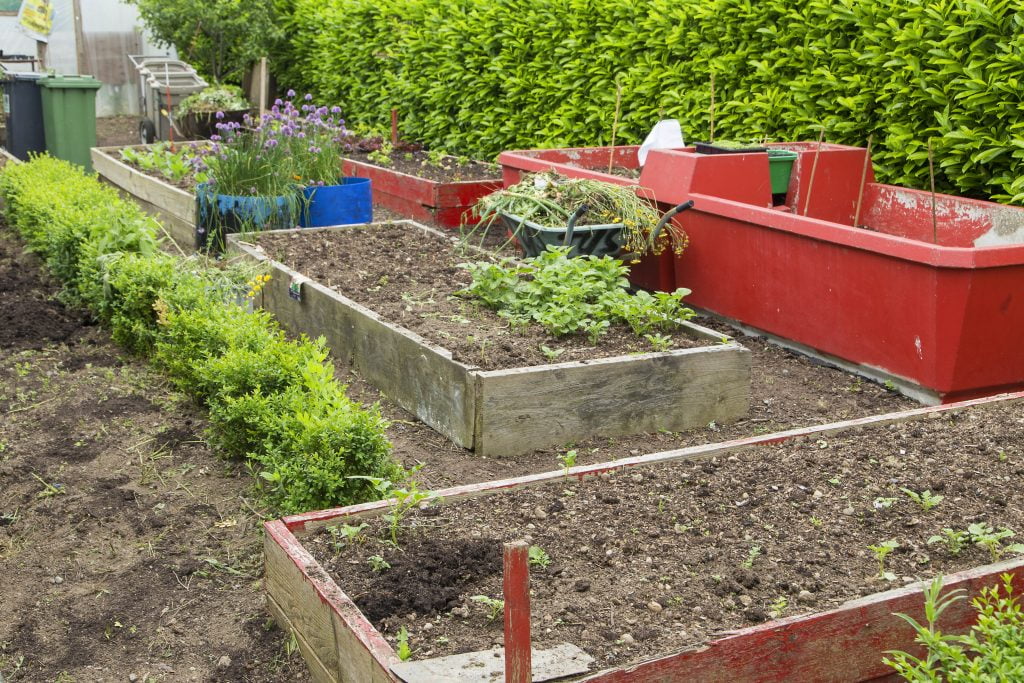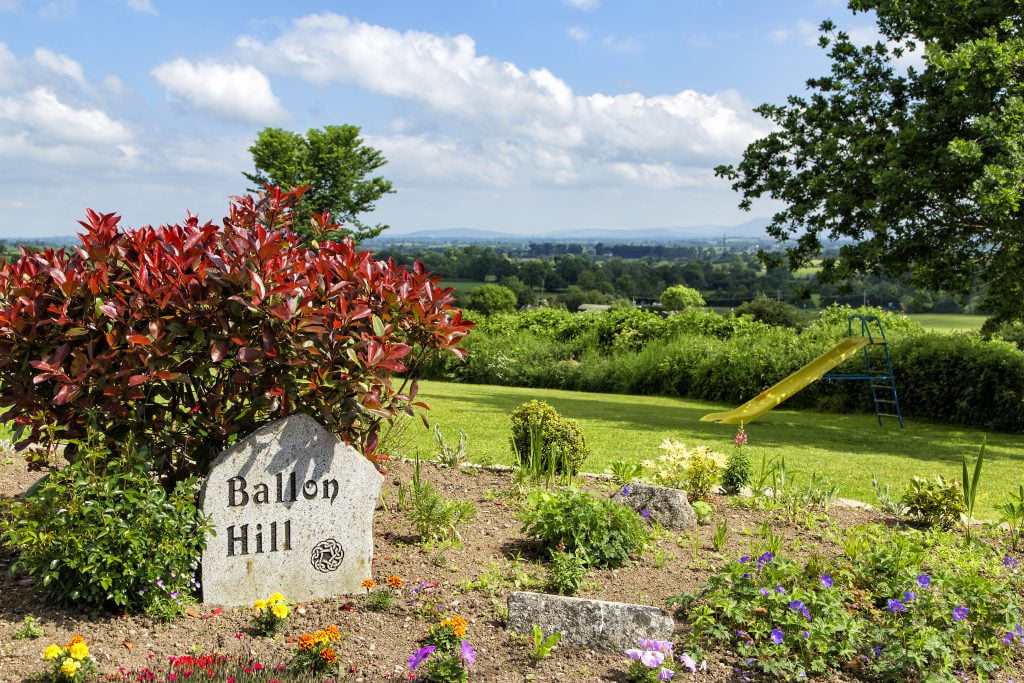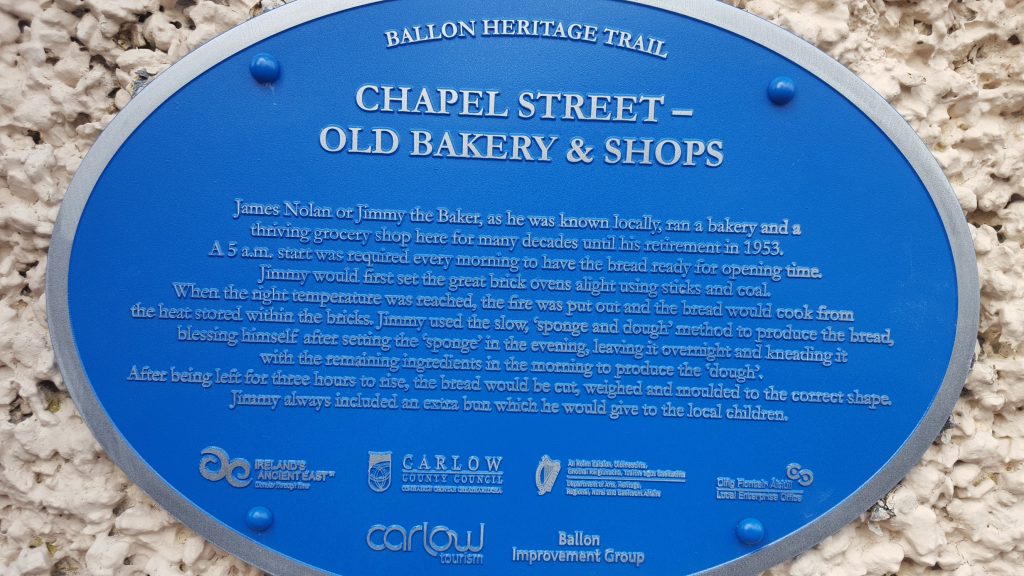Immerse yourself in Ballon’s natural heritage through a scenic tree trail.
By following this short tree trail through Ballon Village the visitors passes twelve Irish trees, each denoted with a plaque
Although it is more usual to plant ornamental tree varieties in village centres and housing estates, native trees attract more native birds and insects, and so increase bio-diversity within the village. Some of the common trees such as beech, lime and sycamore have not been included on this trail. This is because they are not native, but were introduced into Ireland by man hundreds of years ago, and have since become naturalised.
Ballon Tree Trail
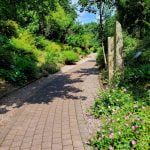
Trail Route
The trail starts at St Peter and Pauls’ Walkway before leading into Ballon’s ancient graveyard, through Mullawnmore Estate and onto the Fenagh Road before finishing in the 1916 Garden. A lovely route, the walk takes you past many heritage buildings and cultural attractions along the Ballon Heritage Trail including the Church of St. Peter and Paul, the old graveyard, Ballon Hill, one of the most important sites in Ireland during the early bronze age period, and the Bull Tree on Main Street.
Visitor Information
A brochure on both trails can be collected at the visitor information point (VIP) in An Siopa Glas on Main Street. Afterwards relax in Café de Mode on Church Street. Family-run with tasteful décor, Café de Mode offers customers a relaxing environment in which to enjoy a varied menu from gourmet sandwiches to lite bites, baked potatoes, homemade pancakes, scones, sweet treats and award-winning coffee. For opening times visit www.cafedemode.ie
The Garden
Willow – Salix species – Saileach:
Willow forms a continuum of species, which are often difficult to distinguish. A tree which is very tolerant of waterlogged soil, it can often be found in marshy ground. Famous for its use in weaving baskets, the wood is very pliable and the tree can be coppiced or pollarded to produce willow whips for this purpose.
Hawthorn – Crataegus monogyna – Sceach Gheal:
Our native fairy tree, the hawthorn is surprisingly also native to North Africa, as well as Western Asia and most of Europe. Sprinkled throughout Irish myth and legend, are many references to hawthorn or whitethorn and its connection with the fairy folk. It was once believed that to place a sprig of fairy hawthorn in a milking parlour would cause cows to supply extra pints of creamier milk.
To this very day, there are still farmers who plough a wide circle around lone hawthorn trees, avoiding all contact between tilling implement and root, for fear of offending the fairies that supposedly inhabit the tree.
Rowan or mountain ash – Sorbus aucuparia – Caorthann:
Rowan adds colour to woodland throughout Ireland, especially in the hills where it will grow at a high altitude even on rocky ground: its other common name is mountain ash. The creamy flowers ripen into scarlet berries which colour early in the season and provide food for thrushes through the winter. A mistle thrush will defend a rowan tree or holly as its territory, not for nesting, but through the winter as its feeding territory. Rowan is an attractive garden tree: it likes well drained sites but will thrive in most soils.
Yew – Taxus baccata – Iúr:
Famously long lived, yew is associated with graveyards not because the toxic foliage will keep livestock out of them (as is widely believed), but because it is famously able to rejuvenate itself, an unusual trait in a conifer. Some trees in Ireland are believed to be up to 1,000 years old. Famously used in Britain to make longbows, the wood is durable and flexible. Ireland’s only native yew wood is in Killarney.
Sessile oak – Quercus petraea – Dair ghaelach:
Found on less fertile, more acidic soils than the pedunculate oak, sessile oak is more common, but found mostly on the west coast. Oaks can reach a height of 40 metres, and can take several hundred years to mature, but provide a rich habitat for other species. Its wood is famed, and the timber and bark has been put to many uses down the years.
Elder – Sambucus nigra – Troman:
Elder is a small tree, growing to approximately 6m in height, known for its white flowers in spring, and its dark purple to black berries in the autumn. It is a common hedgrow tree, and is not common in developed woodland.
Ash – Fraxinus excelsior – Fuinseog:
Ash is a large, common deciduous tree, probably the most common farmland tree. It is late to come into leaf (hence the Irish tradition that potatoes can be planted until you can no longer see through the tree). The wood is traditionally used to make hurleys. They can grow up to 45m high.
Hazel – Corylus avellana – Coll:
Generally an understorey tree, hazel is often found underneath a canopy of ash or oak, but can also be found in hazel scrub such as the Burren. It is a shrub rather than a tree, reaching a height of about 5 metres. The nuts are of course edible, but are produced far less by understorey trees than by trees which are less in the shade.
Whitebeam – Sorbus aria – Fionncholl:
A relative of the rowan, the whitebeam also produces edible red berries, but it has a different distribution in that it prefers the south east of the country. It reaches a height of around 20 metres.
Birch – Betula pendula – Beith gheal:
There are two species of birch in Ireland, silver birch and downy birch. Birch is a colonising tree, and is thought to be one of the first trees to have made it to Ireland after the last Ice Age; they are more tolerant of poor soils than most trees, and can act as a nurse species to other species which take longer to establish. They are quick growing, short lived, and grow to around 25 metres.
Field Maple – Acer campestre :
Small erect clusters of greenish-yellow flowers. Hairy fruit with horizontal wings, but produces fruit erratically. Smallish leaves with 3-5 oblong, blunt lobes with hairy margins. Pale-grey bark, downy twigs. Grows as a large shrub or small tree, to 20m. Prefers moist, base-rich soils. Frequently planted on roadsides and in hedges and amenity areas, occasionally naturalises.
Rowan – Sorbus aucuparia – Caorthann:
Also known as the mountain ash, due to its leaf structure. A small tree, it is tolerant of poor soils (which is where it gets the name mountain ash) and makes a good coloniser. The berries provide food for birds, which help spread the tree.
Facilities
Ballon Village has a full range of visitor facilities including parking, shops and a café. Maps of the route available in An Siopa Glas and local shops.
No posts
Frequently Asked Questions
Lorem ipsum dolor sit amet, consectetur adipiscing elit, sed do eiusmod tempor incididunt ut labore et dolore magna aliqua. Ut enim ad minim veniam, quis nostrud exercitation ullamco laboris nisi ut aliquip ex ea commodo consequat. Duis aute irure dolor in reprehenderit in voluptate velit esse cillum dolore eu fugiat nulla pariatur. Excepteur sint occaecat cupidatat non proident, sunt in culpa qui officia deserunt mollit anim id est laborum.
Lorem ipsum dolor sit amet, consectetur adipiscing elit, sed do eiusmod tempor incididunt ut labore et dolore magna aliqua. Ut enim ad minim veniam, quis nostrud exercitation ullamco laboris nisi ut aliquip ex ea commodo consequat. Duis aute irure dolor in reprehenderit in voluptate velit esse cillum dolore eu fugiat nulla pariatur. Excepteur sint occaecat cupidatat non proident, sunt in culpa qui officia deserunt mollit anim id est laborum.
Lorem ipsum dolor sit amet, consectetur adipiscing elit, sed do eiusmod tempor incididunt ut labore et dolore magna aliqua. Ut enim ad minim veniam, quis nostrud exercitation ullamco laboris nisi ut aliquip ex ea commodo consequat. Duis aute irure dolor in reprehenderit in voluptate velit esse cillum dolore eu fugiat nulla pariatur. Excepteur sint occaecat cupidatat non proident, sunt in culpa qui officia deserunt mollit anim id est laborum.
Lorem ipsum dolor sit amet, consectetur adipiscing elit, sed do eiusmod tempor incididunt ut labore et dolore magna aliqua. Ut enim ad minim veniam, quis nostrud exercitation ullamco laboris nisi ut aliquip ex ea commodo consequat. Duis aute irure dolor in reprehenderit in voluptate velit esse cillum dolore eu fugiat nulla pariatur. Excepteur sint occaecat cupidatat non proident, sunt in culpa qui officia deserunt mollit anim id est laborum.
Opening Times
Daily
ADMISSION:
Free
DIRECTIONS:
The walk starts at the St Peter and Paul Walkway in Ballon. Group tours facilitated with prior notice.
Tree Talk
The Tree Alphabet:
In ancient times in Ireland, before people used the letters and writing we use today, a form of writing called Ogham was used. We can still see some examples of this on carved standing Stones in old monastic sites, (in the National Museum of Ireland and in the Ulster Museum).
Ogham came from an earlier form of writing, the tree alphabet, where the letters came from the trees the people were familiar with and used. There were only twenty letters in this alphabet.
| B | (beith) | Birch |
| L | (luis) | Rowan |
| F | (fearn) | Alder |
| S | (saille) | Willow |
| N | (nion) | Ash |
| H | (huath) | Hawthorn |
| D | (dair) | Oak |
| T | (tinne) | Holly |
| C | (coll) | Hazel |
| Q | (quert) | Apple |
| M | (muin) | Bramble |
| G | (gort) | Ivy |
| Ng | (ngetal) | Reed |
| Ss | (straif) | Blackthorn |
| R | (ruis) | Elder |
| A | (ailm) | Scots Pine |
| O | (onn) | Gorse |
| U | (ura) | Heather |
| E | (eadha) | Aspen |
| I | (iodha) | Yew |
What People are Saying
“Lorem ipsum dolor sit amet, consectetur adipiscing elit, sed do eiusmod tempor incididunt ut labore et dolore magna aliqua. Ut enim ad minim veniam, quis nostrud exercitation ullamco laboris nisi ut aliquip ex ea commodo consequat.”
“Lorem ipsum dolor sit amet, consectetur adipiscing elit, sed do eiusmod tempor incididunt ut labore et dolore magna aliqua. Ut enim ad minim veniam, quis nostrud exercitation ullamco laboris nisi ut aliquip ex ea commodo consequat.”
“Lorem ipsum dolor sit amet, consectetur adipiscing elit, sed do eiusmod tempor incididunt ut labore et dolore magna aliqua. Ut enim ad minim veniam, quis nostrud exercitation ullamco laboris nisi ut aliquip ex ea commodo consequat.”

